Eleanor J. Harvey, Senior Curator at the Smithsonian American Art Museum, proposed a new Texas state motto in her engaging keynote address for the recent Center for the Advancement and Study of Early Texas Art Symposium, held April 27-29 at the Witte Museum in San Antonio. Recalling her curatorial tenure at the Dallas Museum of Art from 1992 to 2002, Harvey referenced a 1992 request by the family of Dallas artist Perry Nichols, a member of the fabled “Dallas Nine” who died shortly after Harvey arrived in Dallas.
“Perry’s family reached out to me directly at the DMA to find out if we would be willing to bring several of Perry’s paintings to display in the church vestibule during his memorial service,” Harvey said. “Since Perry had done work for the museum, we decided this would be okay, and I met the museum truck in advance of the service.” As Harvey recollected, the three paintings exhibited were Perry’s Red Queen, Fight in the Corral, and West Texas Snow. “What I really appreciated,” she continued, “was the museum’s willingness to do this for an artist who was so much a fixture in the Dallas community — very much an example of my belief that the proper response to any question, regardless of how unorthodox, is ‘Why the hell not?’” Recalling with fondness her years in Texas, the curator added that the light-hearted yet determined affirmation would make a good state motto for this massive cactus patch of mavericks.
Indeed. Why the hell not? It occurs to me that Harvey’s catchphrase is also operative for the ever-increasing number of appreciators of earlier, generally more representational Texas art by smartypants avant-garders like myself. The more my capacity expands to savor and process challenging, whatthehellisit-ish contemporary work, the more I also enjoy indulging my interest in the bygone, yet-somehow-still-here parallel universes depicted by Gentilz, Lungkwitz, Bywaters, et al.
It’s complicated. And it’s simple. Why the hell not?
Established in 2003 and headquartered at the San Angelo Museum of Art, CASETA aims “to promote the preservation, study and appreciation of Texas visual arts and its history.” The group defines “early” art as work produced 40 years prior to the present, but the demarcation isn’t severe. No one blew a gasket, for instance, when Harvey deployed an image of Luis Jiménez’ Vaquero (modeled 1980, cast 1990) and explained that she tells Smithsonian American Art Museum visitors to find the museum entrance by looking for the 16-foot fiberglass sculpture of a vaquero on a bucking blue bronc.
CASETA maintains active oral history, publication, research, and archive projects, but the annual three-day symposium held in a different city each spring (Austin next year) is the only time the entire membership gathers from across the state. The convention includes book and art exhibits and sales, along with special receptions and outings, but the heart of the gathering is the series of lively power-point talks and panels that drill down into specific artists and themes.
Francine Carraro, Director of the Wichita Falls Museum of Art, gave the opening pacesetter address, entitled “The Texas Scene is the American Scene.” Carraro believes that the platform that elevated Texas art to national significance was a major 1936 exhibition at the then-new Dallas Museum of Fine Arts at Fair Park — site of the Centennial Exposition — in a celebration of the state’s 100th birthday. Her paper expanded a conversation begun in Ken Ragsdale’s 1987 book title, The Year America Discovered Texas: Centennial ’36.
“Discovering the region as a means to discover America,” Carraro noted, “Texas painters and sculptors saw themselves as avant-garde artists in the pursuit of identifying a truly American art… . Grounded in Texas subjects, themes and images, they aspired to express universal concepts.” National coverage of the Centennial exhibition that year, such as an entire special issue of Art Digest, allowed Texas Regionalists such as Otis Dozier, William Lester, Charles Bowling, Jerry Bywaters, Alexandre Hogue, Coreen Spellman, and Florence McClung to revel “in the spotlight that brought them out of geographic isolation from the art world into the center of American art.”
Carraro concluded her report, which will be published in the catalog of a Texas art exhibition at the Witte Museum next spring, by highlighting two 1936 paintings, Road Signs by Coreen Mary Spellman, and Cotton Boll by Otis Dozier. These works, she noted, “represent the tenets and brilliance of Texas regionalism and are exemplary of the reasons why Texas art of the 1930s continues to bring new meaning to the image of Texas.”
Amy Von Lintel, Associate Professor of Art History at West Texas A&M University in Canyon, where Georgia O’Keeffe lived and taught from 1916 to 1918, presented a fascinating talk about the young artist’s time in Texas and the area’s influence on her developing aesthetic. It was based on Von Lintel’s recent book Georgia O’Keeffe: Watercolors 1916-1918. When the art historian first proposed the volume, the Santa Fe publisher replied, “You know she’s dead, right?”
O’Keeffe lived in Amarillo from 1912 to 1914, teaching in the public school system, then returned to the eastern seaboard before heading back to the West and the high plains town of Canyon. There, in the country she found to be “almost all sky… such wonderful sky,” and amongst the geologic splendor of Palo Duro Canyon, Georgia’s art began to evince the natural abstraction that later infused her most celebrated New Mexico work.
My handwriting is a mess, but I’m pretty sure Von Lintel said a case can be made that young Georgia introduced Modernism to Texas. Does it matter whether or not we can call her a “Texas artist”? Lines on a map. Rivers on your hand. Drifting dreams under the sun. Endless breath follows the land. You can see Red Landscape, one of the five known oil paintings O’Keefe made in Texas, at the Panhandle-Plains Historical Museum in Canyon.
Eleanor Harvey noted that the Smithsonian contains work by Robert Rauschenberg (“his Texas roots surprise people”), John Biggers, David Bates, Jesús Moroles, and John Alexander (the last of whom, Harvey noted, someone said “could be on the moon and still be a Texas artist”). But when it comes to Texas artists before 1950, aside from WPA post-office mural studies and Elisabet Ney’s Lady Macbeth… not so much. “There is not a single Onderdonk in the Smithsonian,” she said, causing an audible gasp from at least one attendee.
To remedy that gap, and to reinforce the promise of 1930s (and beyond) Texas art as American art and help a national audience experience Texas art, Harvey proposed that Texas collectors and museums collectively send 10 or 15 pieces to the Smithsonian. “Get Texas art out of Texas.” Noting that 2020 will be the Year of the Woman at the Smithsonian, the curator spoke of desiring work by artists like Florence McClung and Coreen Spellman*, citing the latter’s Road Signs in the DMA collection as a particularly potent example. She also projection-shopped for examples such as William Lester’s oil on masonite The Three Crosses, Otis Dozier’s lithograph Crows in a Melon Patch, and the oil painting West Texas Incident by Everett Spruce. “And I want Hermann Lungkwitz,” she added. “His 19th-century landscapes can hang with the best.”
A panel discussion, “Controversial Images in Early Texas Art,” with Ron Tyler, Victoria Cummins, Eleanor Harvey, and Raul A. Ramos provided appropriate and necessary reminders that the cactus patch was once even less evolved in socio-political terms than it is now and that, yes, we still have a furr piece to go. But it was not particularly surprising data. Cummins eloquently lamented the “exotic sense of otherness” that Anglo culture historically imposed on African Americans. Harvey confirmed that it does not erase history to move Confederate monuments to museum settings. Ramos asked, “Where are the Mexicans in American history?”
Kelly Donahue-Wallace, Professor of Art History at the University of North Texas, entertained with tales and images of the ivory, silk, and silver items, aka “stuff”, that Spanish Colonial travelers hauled into the northern province of Texas. Mark Thistlethwaite, Chair of Art History at Texas Christian University, recalled the career of his late colleague, the artist McKie Trotter.
Amy Fulkerson, Chief Curator at the Witte Museum, spoke about the significant impact of artist and curator Eleanor Onderdonk (1884-1964) on the art community in San Antonio and throughout the state. Sarah Beth Wilson, Curator of Exhibitions and Collections at Beaumont’s Art Museum of Southeast Texas (AMSET), followed with a conversation with Richard Stout, whose retrospective of work from the 1950s to 2016 was recently shown at AMSET. “We talked with this renowned artist about his early beginnings in Beaumont,” Wilson said, “his time at the Art Institute in Chicago, life and work in Houston, including his long tenure at the University of Houston, and creative inspiration and sources for subjects and colors — all stemming from his geographic proximity and attraction to the Gulf Coast region of Texas and the places he calls home.” The Stout retrospective opens this month at the Art Museum of South Texas in Corpus Christi and travels to the University of Houston-Downtown this fall.
A reception at Silver Eagle Distributors early Saturday evening gave symposium attendees a look at some 70 pieces from the Bobbie and John Nau Collection of Texas Art. Established in 2003, the collection includes more than 1,800 works made in the state circa the 1840s to 2017. In addition to a quartet of lithographs by Luis Jiménez, the artists on view included Manuel Acosta, Julian Onderdonk, Mary Anita Bonner, Bob Stuth-Wade, and Porfirio Salinas.
I was especially glad to discover in the Nau Collection the new-to-me desert scenes of Audley Dean Nichols (1875-1941), who moved from hometown Pittsburgh to El Paso for health reasons and became one of the finest interpreters of desert scenes I’ve seen. And since I have a fascination with rattlers, the fat crotalus atrox in Empress of Silence by William B. Montgomery also captured my eye.
Back at the symposium, the CASETA Texas Art Fair offered booths with works for sale by a half dozen galleries or so. Pete Rainone, who is writing a book on LBJ’s favorite artist, Porfirio Salinas, told me that when his family first opened Rainone Gallery in Arlington in 1955, people weren’t too interested in Texas Regionalism. Judging by the lively exchanges and enthusiastic buzz at the annual CASETA Symposium, that situation has changed and with flair. And really now, why the hell not?
*Few artists are more appreciated in their hometowns than Forney native Coreen Spellman (1905 – 1978). Long before she went off to college in Denton, her father was driving her into Dallas for weekly art lessons. Further education took her far from Texas, but she returned to Denton to teach until 1974. She worked in watercolor, etching, aquatint, mezzotint, and lithography, and she and seven other women founded the Printmakers Guild to give women more access and opportunity to show and sell their work. Her solo exhibitions included the Dallas Museum of Fine Arts, the Museum of Fine Arts Houston, the Witte Museum, and the Elisabet Ney Museum. Today her work can be seen in Forney, just east of Dallas, at Forney High School’s Ellen Brooks West Memorial Library, the Spellman Museum of Forney History, and Forney City Hall.
The 2018 CASETA Symposium took place April 27-29 at the Witte Museum in San Antonio.


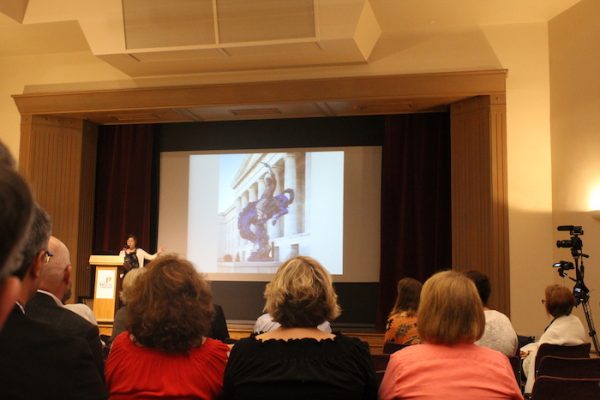
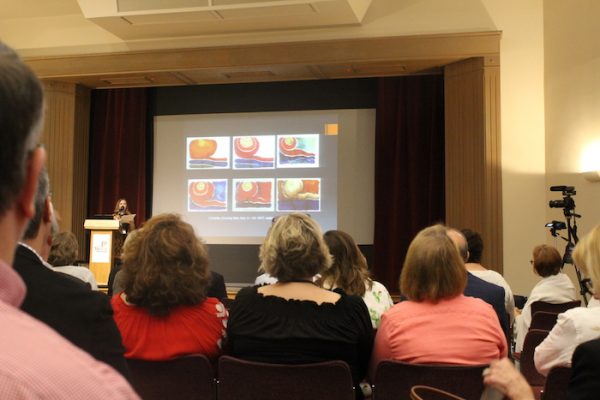
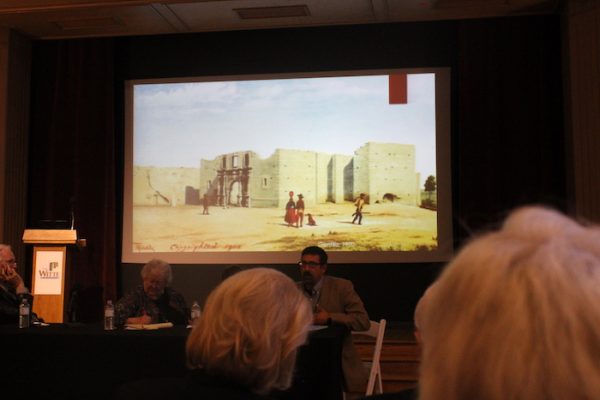
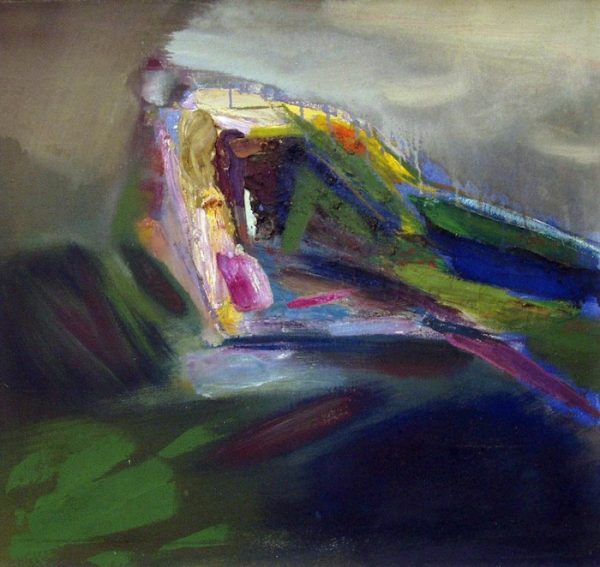
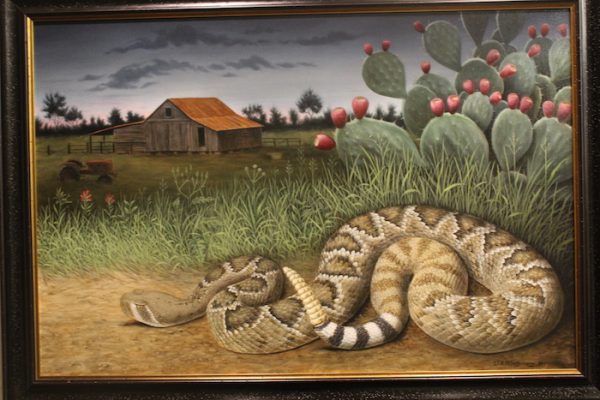

4 comments
I was at this symposium but find it rewarding to read your summary and highlights, filled with key moments and a few things I missed. Go Texas!
Many thanks Gene Fowler and Glasstire for attending and reporting on the 16th Annual CASETA Symposium at the Witte Museum in San Antonio. I’ve attended every one and always leave each year convinced that I’ve just attended the best one yet. And this year was no exception. Wow! What an exciting three days of talks about (and talking about – and looking at) Texas art from the past — which is not past at all, but very much still present for Texans, artists and others alike. Nothing against contemporary Texas art, but a lot of that old stuff is also amazing, fabulous, beautiful, motivating. Unfortunately, we don’t get a chance to see it nearly enough. For those who weren’t able to attend, plan now for next year in Austin. And view presentation from earlier years (2018 coming soon) on Youtube at
https://www.youtube.com/channel/UCM3AAPr-MaAgi5DsH6ZhqPA
(Full disclosure: I am a member of the CASETA Board and the coordinator of HETAG: Houston Earlier Texas Art Group.)
Like Katie Robinson Edwards, I was at the Symposium, but found that your article intensified the knowledge that I received from the speakers. Hope you are able to return to the Symposium next year. (Full disclosure: I am Chair-Elect of the CASETA Board.)
(Guess I should’ve disclosed that I, too, am on the CASETA Board. We are a fearsome and dedicated group.)